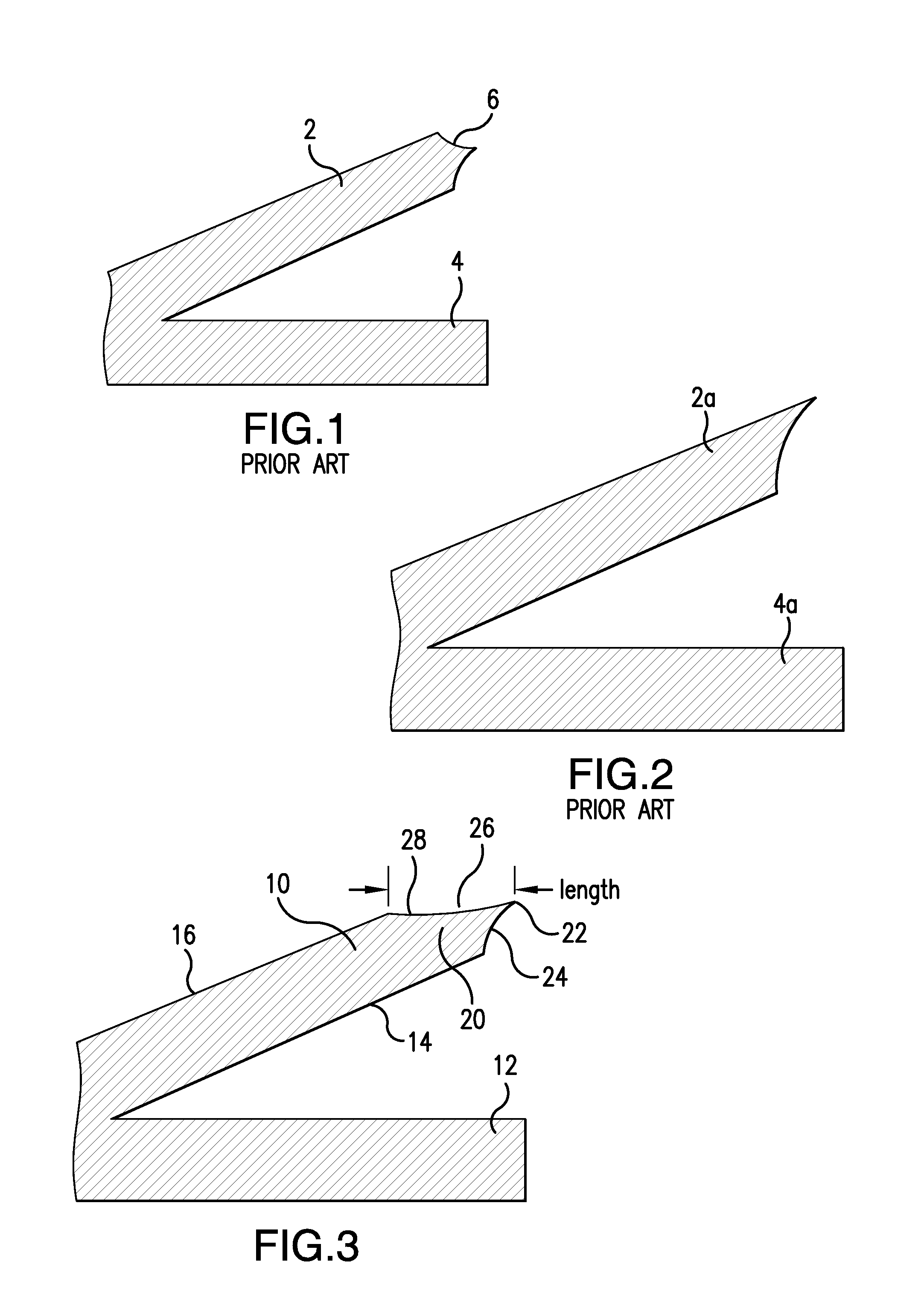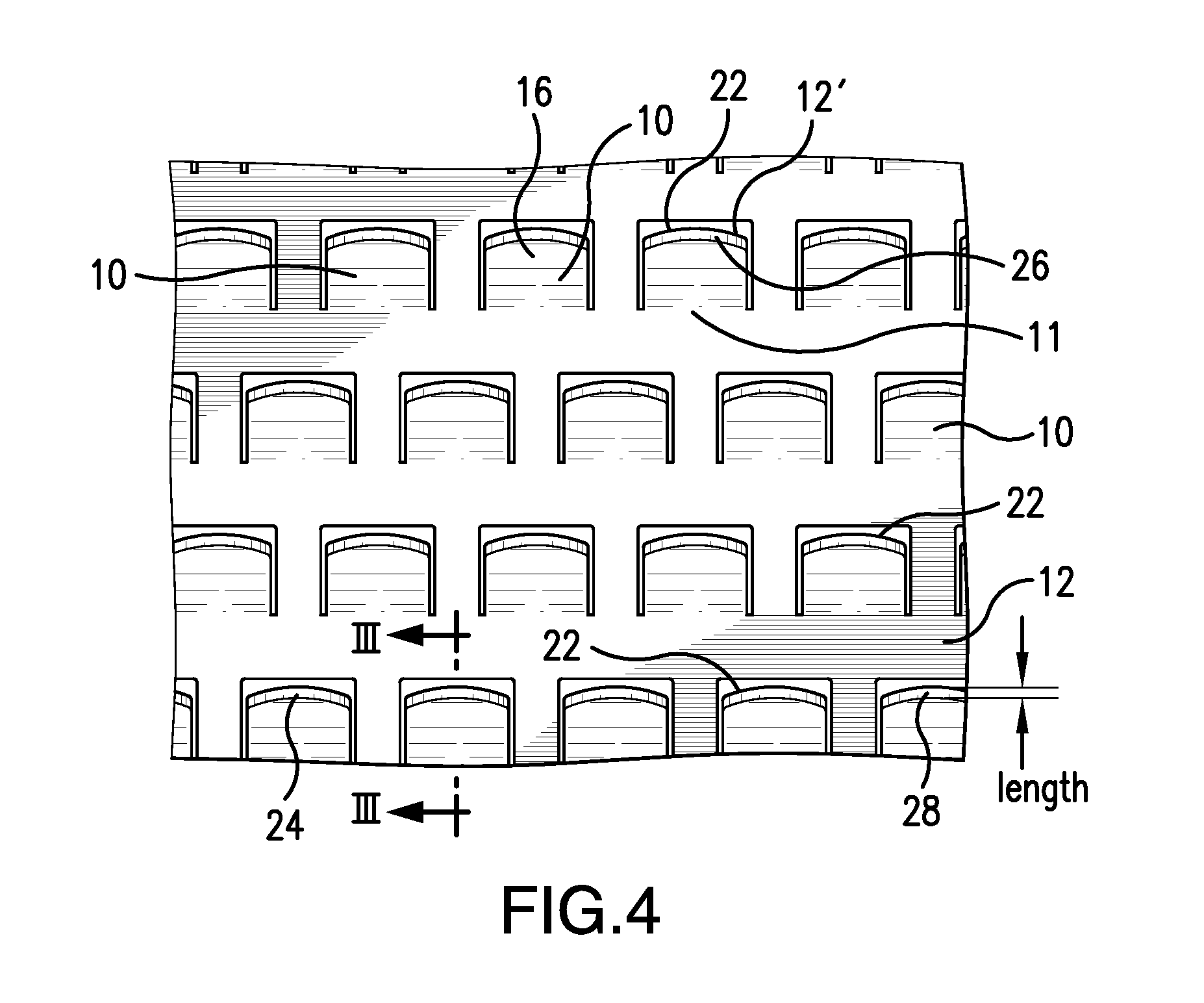Formed or domed cutting teeth formed by improved double etching process
a double etching and etching process technology, applied in the direction of grading, solid separation, kitchen equipment, etc., can solve the problems of increasing disadvantageous thickness of teeth formed by a single side etching process, and a number of deficiencies, so as to reduce the force needed to move food items, improve the force needed to cut or slice food items, and alleviate some deficiencies
- Summary
- Abstract
- Description
- Claims
- Application Information
AI Technical Summary
Benefits of technology
Problems solved by technology
Method used
Image
Examples
first embodiment
[0020]Referring to FIGS. 3 and 4, there is illustrated an improved cutting tooth 10 of the application intended to be a single cutting element or alternatively, arranged as an array of cutting teeth formed by a novel double side chemical etching method of the invention. The tooth 10 comprises a bent or cantilevered element angularly arranged in integral relationship at the lower end 11 of the tooth 10 to flat base 12. As seen in FIG. 4 each tooth 10 is raised as one of a plurality of bent or cantilevered cutting teeth angularly arranged with respect to base 12 above base opening 12′in a pattern of upward protruding elements. It should be apparent, however, that tooth 10 can also comprise a single cutting element of a cutting or slicing implement in selected applications of use. In accordance with the invention, a blank of metal, such as a stainless steel and or other metal, is treated prior to the etching action of a etching chemical in a manner to create a pattern of protective res...
second embodiment
[0026]Referring now to FIGS. 5-8, there is illustrated the invention having domed or formed cutting teeth, generally designated by reference numeral 2b. In use the cutter tooth can be employed as a single cutting element or can comprise a plurality of cutting elements 2b′ as shown, for example, when used with cutting implement 4b in FIG. 5. Domed cutting teeth 2b are formed from a blank of metal, such as steel, through a standard forming process in a well known manner to create a raised dome 6b integrally projecting in a raised orientation above base 8b and generally surrounding an internal cutter chamber 6c, except for a open leading opening in cutter 6b. The thickness of the dome formed is less than the thickness of base 8b.As best seen in FIG. 6, the top of the open end 6b′ is formed with V-shaped cut-out area 10b which impacts the food or other items being moved past the tooth 2b. The chamber 6c is situated above holes 8b′ in base 8b below teeth 2b to capture material which is c...
PUM
 Login to View More
Login to View More Abstract
Description
Claims
Application Information
 Login to View More
Login to View More - R&D
- Intellectual Property
- Life Sciences
- Materials
- Tech Scout
- Unparalleled Data Quality
- Higher Quality Content
- 60% Fewer Hallucinations
Browse by: Latest US Patents, China's latest patents, Technical Efficacy Thesaurus, Application Domain, Technology Topic, Popular Technical Reports.
© 2025 PatSnap. All rights reserved.Legal|Privacy policy|Modern Slavery Act Transparency Statement|Sitemap|About US| Contact US: help@patsnap.com



